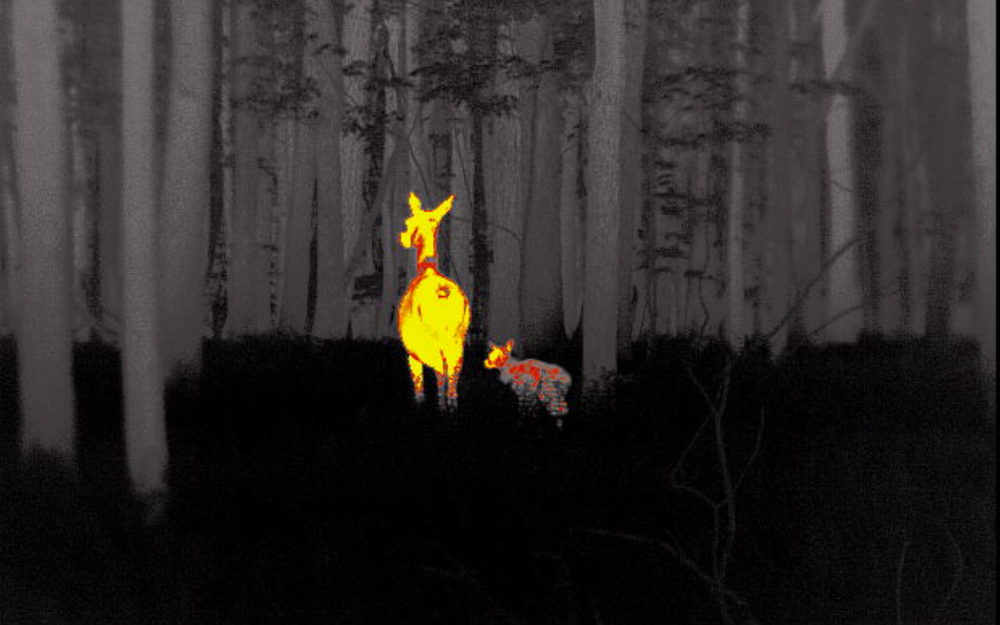When volunteers give their time to raise money for elk country, it’s always rewarding to know the impacts and see just how appreciated those efforts are. In that vein, Pennsylvania volunteers got to hear some feedback from Penn State graduate student Avery Corondi this fall. She went out of her way to thank the volunteers for working hard to help fund some important technology for her research study on mortality rates of elk calves in Pennsylvania’s elk range.
Corondi and her team had an extremely successful first field season in 2020. She writes in an email to volunteers “our success was influenced by the use of Pulsar Helion thermal monoculars – devices that easily detect the heat signatures of the calves. I am writing to thank all of you because the units were purchased with funds from RMEF raised by you, PA volunteers!”
During their field season, Corondi and her team darted and captured cow elk in Pennsylvania’s Elk Management Area and performed ultrasounds on them. If they were pregnant, she and her team fitted the cows with vaginal implant transmitters (VITs) that sit inside the birth canal and communicate with the GPS collar on the animal. The VIT records temperature and movement, so when it leaves the cow at birth, it senses a change and initiates a notification. “Through a chain of events we get a text message that tells us that a calf has been born,” says Corondi. “It’s really crazy how technology works.”
The goal of gathering this information is to add more accurate and precise estimates of calf survival to the PGC’s knowledge base in order to inform their elk management -decisions. To get this information, Corondi needs to find the calves as soon after birth as possible and fit them with expandable GPS collars so that she can monitor their movements and survival. That’s where the thermal monoculars came in handy.
The two thermal monoculars were purchased using $7,000 of RMEF grant funds raised by volunteers, and these technological wonders were instrumental in helping Corondi detect the red heat signatures of cows and calves. The team first used the monoculars to locate the cow before she fled, hoping the cow would give evidence to the location of the concealed calf. They could then use the thermal monoculars to discover the calves where they were hidden in the thick Pennsylvania vegetation. “If we can’t find the calves all that work beforehand is wasted,” says Corondi.
Corondi spent three years working as the Pennsylvania Game Commission’s Elk Biologist Aide before taking on her research project, so she’s well aware of RMEF’s involvement in supporting the state’s elk population. Additionally, she was able to meet some of RMEF’s volunteers during the annual calf capture event. Corondi is also a member of RMEF.
“While I worked for the PGC, I was able to witness firsthand the abundant contributions from RMEF,” she says. “Pennsylvania is fortunate to have RMEF’s support, please know that your efforts do not go unnoticed. Thank you for impacting this project and for everything you do for the elk of Pennsylvania.”
